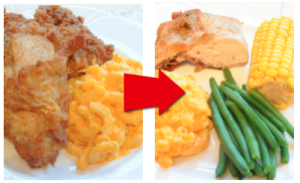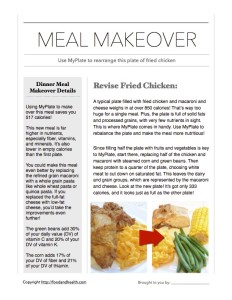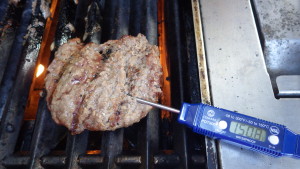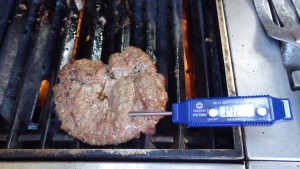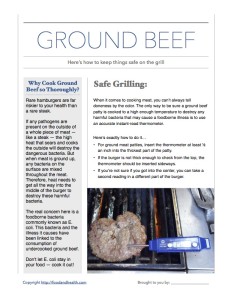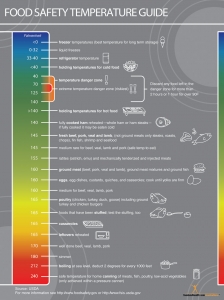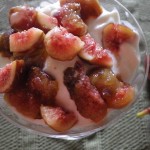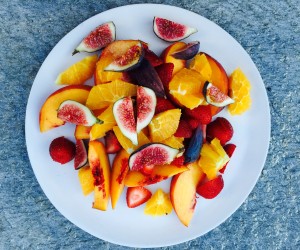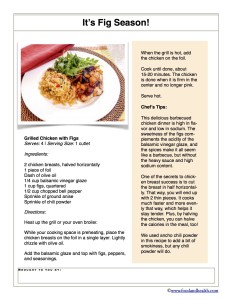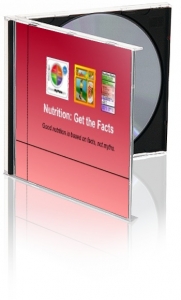Check out this amazing MyPlate meal makeover! I originally kept this handout as an exclusive part of the soon-to-be-released My Plate activity book, but my resolve has crumbled and I can’t wait to share it with you today! If you like what you see, be sure to keep an eye out for the free printable MyPlate handout at the bottom of the post…
Meal Makeover: Use MyPlate to Rearrange This Plate of Fried Chicken
A typical plate filled with fried chicken and macaroni and cheese weighs in at over 850 calories! That’s way too huge for a single meal. Plus, the plate is full of solid fats and processed grains, with very few nutrients in sight. This is where MyPlate comes in handy. Use MyPlate to rebalance the plate and make the meal more nutritious!
Since filling half the plate with fruits and vegetables is key to MyPlate, start there, replacing half of the chicken and macaroni with steamed corn and green beans. Then keep protein to a quarter of the plate, choosing white meat to cut down on saturated fat. This leaves the dairy and grain groups, which are represented by the macaroni and cheese. Look at the new plate! It’s got only 333 calories, and it looks just as full as the other plate!
Dinner Meal Makeover Details:
Using MyPlate to make over this meal saves you 517 calories!
This new meal is far higher in nutrients, especially fiber, vitamins, and minerals. It’s also lower in empty calories than the first plate.
You could make this meal even better by replacing the refined grain macaroni with a whole grain pasta like whole wheat pasta or quinoa pasta. If you replaced the full-fat cheese with low-fat cheese, you’d take the improvements even further!
The green beans add 30% of your daily value (DV) of vitamin C and 20% of your DV of vitamin K.
The corn adds 17% of your DV of fiber and 21% of your DV of thiamin.
Like what you see? Here’s a free (and printable!) My Plate handout:
And don’t miss these other engaging MyPlate materials from the Nutrition Education Store!



